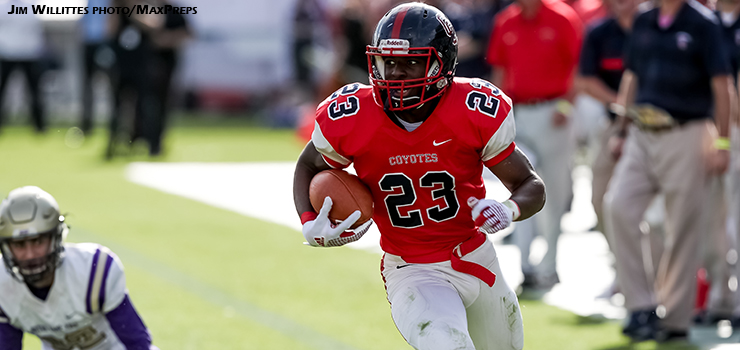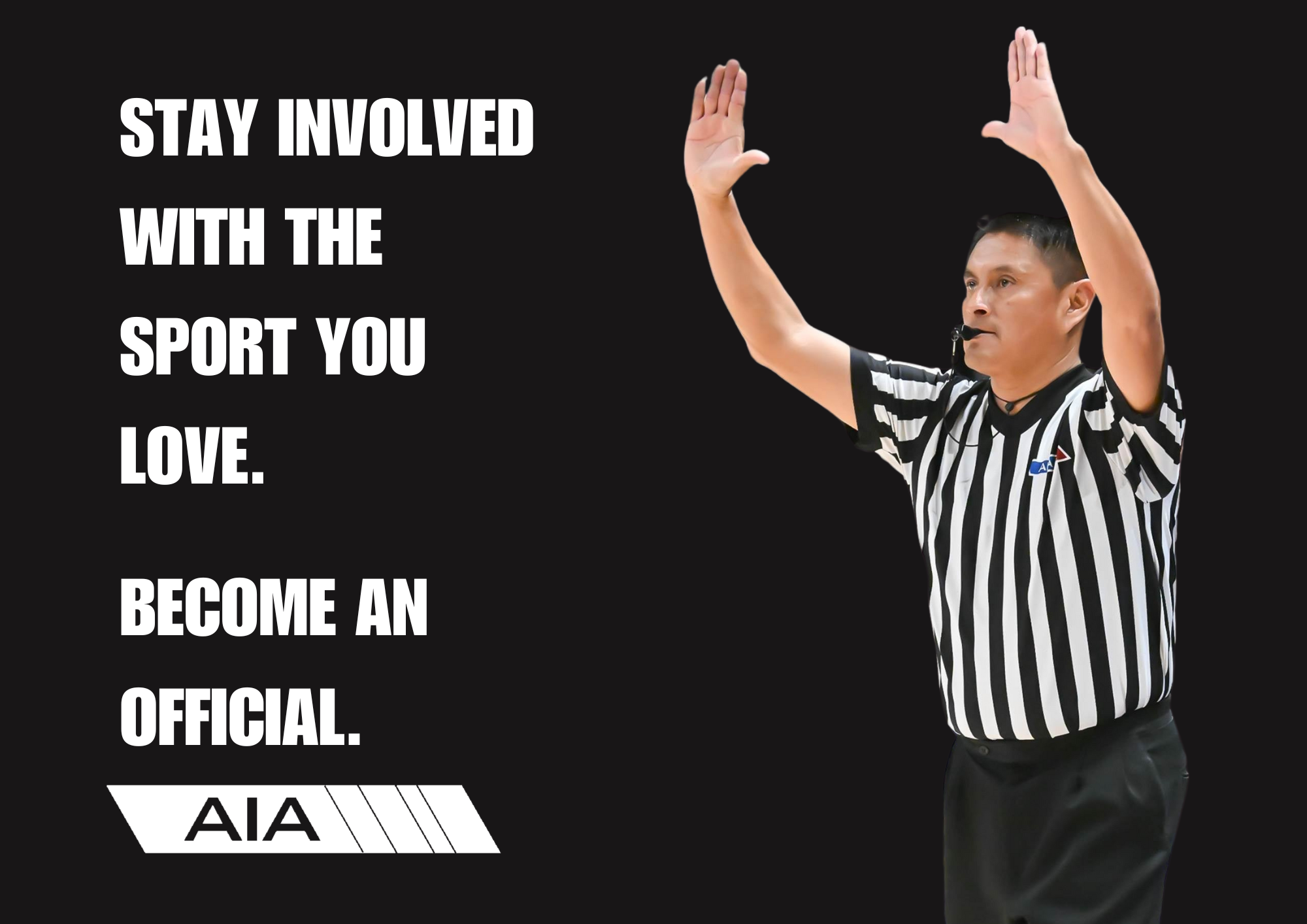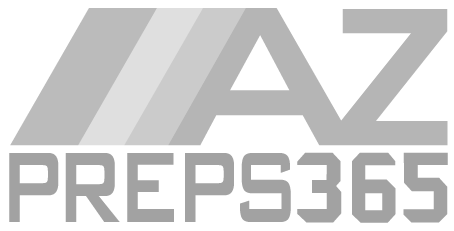AIA board approves 1st Open Division in football
January 23, 2019 by Jose Garcia, AZPreps365

The Arizona Interscholastic Association’s executive board voted Tuesday to add an open, 8-team football division during the 2019 postseason.
This is the first time in the association’s history that football teams from different conferences will compete against each other for the same title. The AIA will use maxpreps’ rankings system to pick the eight Open Division teams at the end of the regular season.
Only the teams in the 4A, 5A and 6A Conferences can vie for the open title. A 2A and 3A Open Division format was discussed by the AIA’s Football Committee but not recommended at this point.
Teams in the 2-6A Conferences will still compete for state titles in those respective conferences and continue to run 16-team playoff brackets. The first Open Division rankings will be posted every season after Week 5.
California is the only other state in the nation with an open high school football division. Every AIA board member during its monthly board meeting voted for the Open Division proposal with the exception of Higley Unified District Athletic Director Dr. Michael Fowler, the Arizona Interscholastic Athletic Administrators Association rep on the board.
David Hines, the AIA’s Executive Director, said that the Open Division will help promote football in the state.
“If we have an opportunity to play our best teams in an 8-team tournament, then we have people who’ll say, ‘I want to go out and watch that game,’” Hines said. “And they are competitive games each week.”
AIA looks to strengthen prior contact, out of state transfer rules
The board also approved the AIA’s recommendations to strengthen the prior contact and out of state transfer bylaws.
The bylaw changes need approval by the Legislative Council before they are amended.
“The direct instruction part of the (prior contact) rule was left open to interpretation, but it’s now better defined,” AIA assistant executive director Joe Paddock said. “The second part of the new prior contact rule is that it identifies the possible groups and or people and locations that can cause the prior contact rule to be enforced.”
The out of state transfer rule explains in more detail what to do when out of state transfers transfer from one Arizona high school to another, Paddock said.
Football reclassification in holding pattern
The board’s attempt to pick a method to reclassify just football teams during the next two-year scheduling block didn’t go anywhere.
But it might get another shot before the week is over.
The AIA’s Football Reclassification Committee will convene Wednesday to see if it can make the changes needed to get board approval. The board discussed Tuesday two reclassification recommendations, standard deviation and 60-40.
In standard deviation, some football programs would only move up or down one conference based on their previous 3-year performance. The Reclassification Committee at first wanted to use just standard deviation to reclassify every conference.
But it also wound up recommending the 60-40 model for a vote. In 60-40, teams were rated 1 through 80, with the top 40 percent going to the 6A and the rest to 5A.
But the board’s vote for 60-40 failed, 5-4, with AIA board president Herman House casting the deciding vote. The deadline to receive Legislative Council agenda items is this week, so the board might have to schedule a special meeting to keep football reclassification on the table.
Executive director report
Hines kicked off his monthly report by acknowledging an article in the January issue of Referee Magazine, detailing how AIA state commissioner of officials Brian Gessner is tackling sportsmanship issues.
He then thanked the board members for helping lead the AIA’s strategic plan committees. The AIA will present the committees’ final recommendations during the February board meeting.
It was positive to hear through each of the (AIA strategic plan) subcommittees a similar theme, Hines said.
“We (AIA) are educationally based,” Hines said. “We have to continue to help create at our schools, through our association, a culture of participation, inclusion and support.”
Hines unveiled some of the strategic planning committees’ goals the AIA will pursue:
--Explaining why the AIA exists. There’s a misconception about what the the AIA is all about. Parents don’t understand what the AIA does and who makes the rules, Hines said. “We exist to build character now for the future,” Hines said. “That’s what we do. We do that through commitment, integrity, respect, collaboration, accountability, and service to our member schools.”
--Address the coaching and athletic director turnover.
--Promotion, branding and marketing. The AIA will form an advisory group of Arizona business leaders to help the AIA grow in those areas.
--Develop a sportsmanship group.
During Hines’ report, the board approved the new AIA employee handbook the AIA’s human resources manager, Maria Ferrell, updated.
Hines’ also reported that:
--The spring coaches mandatory meeting will be held Feb. 2 at noon at Mesa High.
--The first athletic director and student leadership summit will be held April 22 at Xavier Prep. Every AD along with a male and female athlete from their school will be attending the summit.
--The AIA’s annual championship luncheon will be held May 17 at University of Phoenix Stadium.
Financial report
The fiscal year 2017-18 annual audit was presented to the board by the newly contracted firm of Metz & Associates.
The auditors stated that the AIA’s financial statements conform to the generally accepted accounting principles (GAAP), and there were no issues to report. The auditors presented a copy of their report to the board.
The bottom line reported an increase in net assets, coinciding with the budget for the 2017-18 year, according to the report.
Denise Doser, the AIA’s director of finance, reported that the AIA’s December financial report included a healthy financial position for the AIA following the fall 2018 tournaments.
Approved agenda items
The following agenda items were approved:
--Three AIA lifetime passes.
--Thirty contest and or program cancellation requests
--The student eligibility appeal and or request for hardship eligibility requests from Raymond S. Kellis and Sunnyside.
--Additional game requests from five different programs.
--A complimentary pass replacement from Marcos de Niza.
--Tempe High’s request to exceed its baseball tournament limit.
--The new school membership approvals of Avondale St. Johns Paul II Catholic High School, BASIS Phoenix, Avondale West Point, Glendale Desert Heights Prep, Chandler Lincoln Prep Academy.
--The 1A Conference’s basketball proposal allowing 16 teams to make it to the state tournament and shorten the basketball season by a week.
--The 1A Conference’s request to reduce the number of games needed to qualify for the baseball state tournament from 14 to 12.
School violations
Advisement for Prescott’s girls' soccer program. The head coach held a meeting on a Sunday. Teams are now allowed to meet on Sundays.
Advisement for activities program of American Leadership Academy Gilbert North. A transfer student from Highland participated in five games. But it was determined that the student had to sit 50 percent of the JV basketball season. The contests were forfeited.
Advisement for Mohave's girls’ volleyball program. A student participated during the JV volleyball fall season but the school was unaware that the student transferred in until the basketball seaon.
Warning for Cholla’s girls’ basketball program. A freshman was allowed to practice on the girls’ basketball team without her physical on file.
Warning for Mingus’ girls basketball program. Two athletes competed in a combined 19 events but were not cleared to do so by Mingus’ athletic department. An AIA physical and guardian consent forms weren’t filed.
Advisement for Chandler’s activities program. The program played a foreign exchange student who doesn’t live in the Chandler attendance zone.
Advisement for activities program of St. Mary’s. A foreign exchange student was given a uniform and played in the team’s first varsity match of the season but wasn’t cleared to play.
Advisement for Sabino’s girls basketball program. The maximum amount of quarters an athlete can compete in during one day is six. A Sabino player participated in seven quarters (4 JV quarters, 3 varsity quarters) in one day. A concussion suffered by a JV teammate led to the player breaking the rule.
Advisement for Lee Williams’ boys’ basketball program. A student exceeded the amount of quarters he can play in one day.
Advisement for Arizona College Prep’s girls’ basketball program. A student exceeded the amount of quarters she can play in one day.


